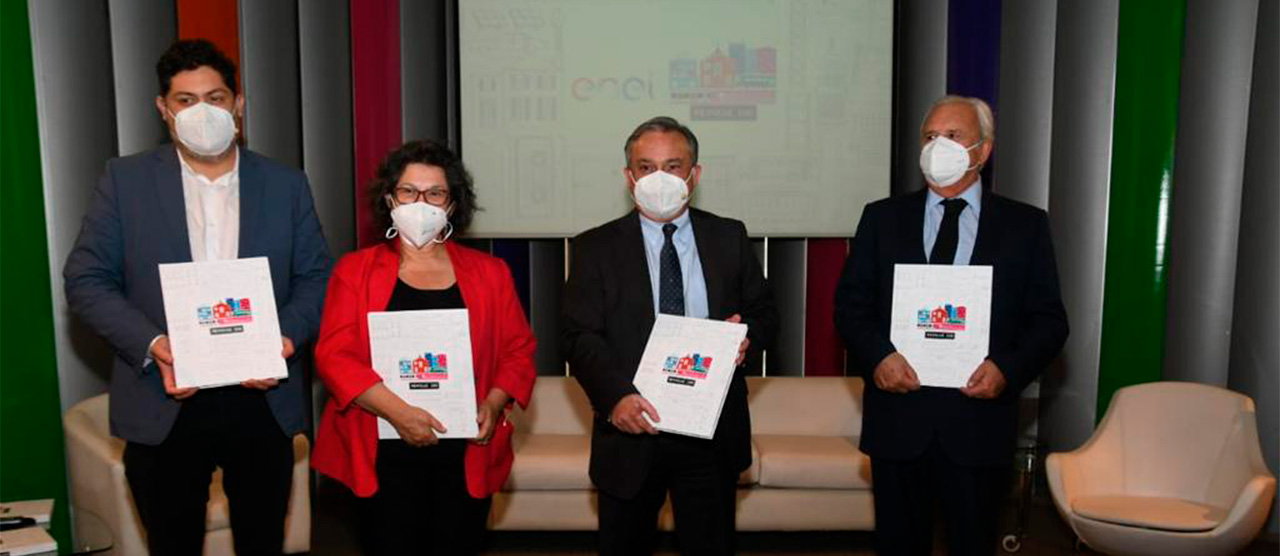
In the framework of the 100-year celebration of Enel Distribucion:
- This project is an initiative by Enel Distribucion along with the ProCultura Foundation, covered by the cultural donations law, with the support of the Ministry of Education and the National Service for Cultural Heritage.
Santiago, April 12, 2022- In the framework of the 100-year celebration of Enel Distribución and as part of the educational and cultural project developed by the company to celebrate its anniversary, they presented the book “Revoluz100.” This physical product serves as a complement to the digital platform launched in late 2021. It is an important contribution to the formation of students and young people across Chile, as well as valuable material for those who enjoy history, urban studies, and a look at the future of the city.
“It fills us with satisfaction and pride to be able to make the book Revoluz100 available to the community. In the framework of the company's centennial celebration, we wanted to make a contribution that will last over time, providing immensely valuable content that can be viewed in an interactive and attractive manner through the digital platform. We hope it becomes an important source of information and educational content that helps raise awareness of the importance and transcendence of electricity distribution during this past century,” explains Ramón Castañeda, CEO of Enel Distribución.
Revoluz100 offers a playful and attractive tour through the city's progress over the years, illustrating the transformations of the citizens’ daily lives, from the most basic to the most transcendental. It presents many different stories told through photography, videos, interviews, sound files, animations, informational charts, and immersive text, available for free to the general public.
The book was written based on the same four approaches upon which the Revoluz100 website was created - Energy , Transport, City and Urban Planning, and Trends, Innovation and Technology -, highlighting the milestones and events that are a part of our history.
It was designed as a graphic and even digital complement - thanks to QR code technology - of www.revoluz100.cl, which offers an overview of the last hundred years, from a different perspective, one focused on transformations tied to electricity that, at the same time, looks at the present and future.
It is important to highlight that the project has an important contribution from the Cultural Donations Law, thanks to the work done by the ProCultura Foundation, and is sponsored by the Ministry of Education and the National Service for Cultural Heritage.
“Revoluz100 confirms the importance of the industrial heritage in the development of communities, as it shows how people's lives were transformed through the arrival of electricity. It is very important for younger generations to know this history and, in that sense, the narrative and multimedia resources on the website have been developed so that children, youth, and teachers can immerse themselves in the content,” says Alberto Larraín, executive director of the ProCultura Foundation.
The images used were taken from Enel Distribucion's Photographic Archive, which contains around 20,000 images from the first half of the last century in Santiago. A true historical and graphic treasure that was handed over to the National Library in May 2019.
In addition to this archive, there was a large number of images taken from other Chilean cultural institutions, which became strategic allies of this project. These include the National Historical Museum, the National Library, and Chilean Memory, all belonging to the National Service for Cultural Heritage (SNPC), the Santiago Metro, the National Film Board, and the Gabriela Mistral Foundation, Inc.
Likewise, the graphic and historical reconstruction of life during the last century required the collaboration of more than 30 public and private institutions that contributed photographs and audiovisual pieces to reconstruct the last 100 years from an innovative perspective, leveraging all the possibilities offered by digital technology.

